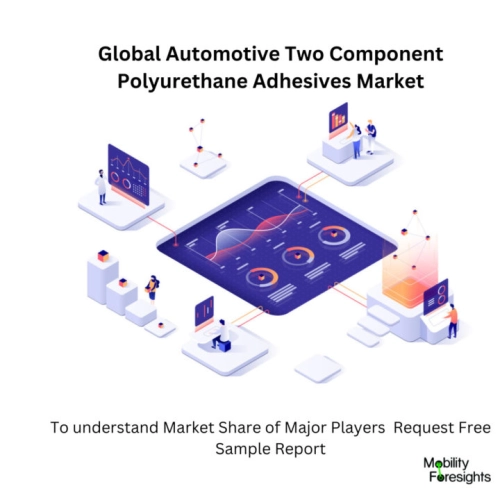
- Get in Touch with Us

Last Updated: Apr 25, 2025 | Study Period: 2023-2030
Two-component polyurethane adhesives include polyols and poly-isocyanates or urethane prepolymers mixed just before application. The two components are the resin and the hardener, which contain isocyanate functions. Ratios of component A (resin) and component B (hardener) can vary.
The proper mix ratio and complete mixing are vital to reaching suitable properties for a specific application through a chemical reaction. Compared to KPU are able to cure more quickly and are not dependent on moisture or heat to cure.
When considering an adhesive technology, itâs important to know the advantages two-component polyurethane adhesives bring to manufacturing processes: Strong bonding to heighten durability ; Better chemical resistance compared to one-component polyurethane adhesive ; Automatic dispensing capabilities and quick cure speed to improve production efficiencies ;
Ability to cure quickly and in a definite time for an application adapted to your lean manufacturing needs ; High versatility and optimization of mechanical properties for enhanced performance ; Multi-substrates adhesion to increase design options for highly versatile design and applications ; Environmental compatibility with recyclable or partially bio-based adhesives.
The main attractive features of two-component polyurethane adhesives forautomotiveare that they give the assembly high resistance to impacts and vibrations. They are also a great solution to bond dissimilar substrates and assemble various materials, notably metals, glass, and many thermoplastic materials and composites.

The Global Automotive Two component polyurethane adhesives market accounted for $XX Billion in 2022 and is anticipated to reach $XX Billion by 2030, registering a CAGR of XX% from 2023 to 2030.
HERBERTS LF 475 / HARDENER 297 - ERBERTS LF 475 / HARDENER 297 is suitable for laminates which are made up of plastic films (printed and unprinted), metallized films and aluminium.
Before beginning the production the suitability of the applied printing inks, film qualities, film additives and coatings has to be controlled individually. In case of any change in quality of these printing inks, films etc. new tests concerning the suitability are necessary. The desired properties of the laminates have to be verified through performance tests prior to the production.
| Sl no | Topic |
| 1 | Market Segmentation |
| 2 | Scope of the report |
| 3 | Abbreviations |
| 4 | Research Methodology |
| 5 | Executive Summary |
| 6 | Introduction |
| 7 | Insights from Industry stakeholders |
| 8 | Cost breakdown of Product by sub-components and average profit margin |
| 9 | Disruptive innovation in the Industry |
| 10 | Technology trends in the Industry |
| 11 | Consumer trends in the industry |
| 12 | Recent Production Milestones |
| 13 | Component Manufacturing in US, EU and China |
| 14 | COVID-19 impact on overall market |
| 15 | COVID-19 impact on Production of components |
| 16 | COVID-19 impact on Point of sale |
| 17 | Market Segmentation, Dynamics and Forecast by Geography, 2023-2030 |
| 18 | Market Segmentation, Dynamics and Forecast by Product Type, 2023-2030 |
| 19 | Market Segmentation, Dynamics and Forecast by Application, 2023-2030 |
| 20 | Market Segmentation, Dynamics and Forecast by End use, 2023-2030 |
| 21 | Product installation rate by OEM, 2023 |
| 22 | Incline/Decline in Average B-2-B selling price in past 5 years |
| 23 | Competition from substitute products |
| 24 | Gross margin and average profitability of suppliers |
| 25 | New product development in past 12 months |
| 26 | M&A in past 12 months |
| 27 | Growth strategy of leading players |
| 28 | Market share of vendors, 2023 |
| 29 | Company Profiles |
| 30 | Unmet needs and opportunity for new suppliers |
| 31 | Conclusion |
| 32 | Appendix |